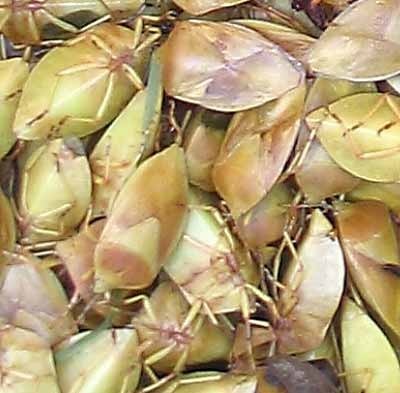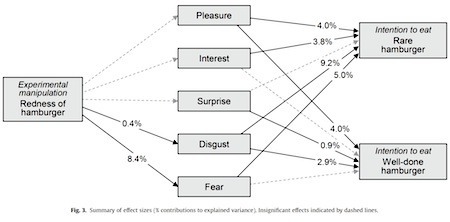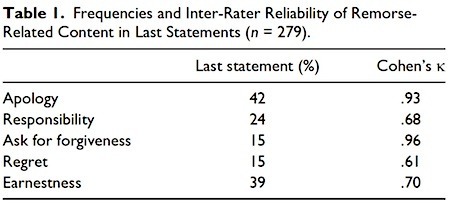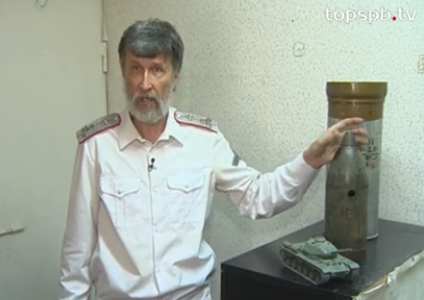Marc Abrahams's Blog, page 412
April 11, 2014
Improbable visit to No Such Thing as a Fish
The QI elves (the researchers who gather and lovingly prepare the guts of the QI television program) kindly invited me to join in on their podcast, which is called “No Such Thing as a Fish”. The official description:
Episode 6: This week in the QI Office Andrew Hunter Murray (@andrewhunterm), James Harkin (@eggshaped), Anna Ptaszynski (@qikipedia), Molly Oldfield (@mollyoldfield) and special guest Ig Nobel Prizes Founder Marc Abrahams (@marcabrahams) gather round a microphone to share their favourite newly discovered facts from the last days.
You can listen to it online.

Nutritional value of eating stinkbugs
 If you have a hangover, and are tempted to eat a few stinkbugs (Encosternum delegorguei) as a cure, you might be concerned about their nutritional properties. Fortunately, there are a handful of scholarly papers available on the subject. May we recommend :
If you have a hangover, and are tempted to eat a few stinkbugs (Encosternum delegorguei) as a cure, you might be concerned about their nutritional properties. Fortunately, there are a handful of scholarly papers available on the subject. May we recommend :
and
Note : Encosternum delegorguei may contain traces of : 2-hexenal, 1-methylbutyl formate, 3-methyl-3-heptanol, octenal, 2,4-dimethyl-3-heptanol, 1,1-diethoxy butane, tridecane, 6-trideceny-4-ne, 4,6-nonadien-8-yn-3-ol, 4,5-dimethyl-1,3-dioxolane-2-cyclohecyl, 3-heptanol, 2-hexenal diethyl acetal, 3-ethoxy pentane, 1,1-dimethoxy heptanes, 2-heptanol acetate, 2-methyl-4-pentanal, 5-ethyl-2-furanone and 2-butoxy pentane. See: • Preliminary chemical analysis of extracts from Encosternum delegorguei using Gas Chromatography Mass Spectroscopy
Photo [detail] showing boiled and dried Stinkbugs, courtesy of Cathy Dzerefos, Wildlife and Environment Society of South Africa.

April 10, 2014
An interim report about the report about reports about reports
The winner of the 2012 Ig Nobel Prize for literature has issued an update — a relatively short interim report — about progress on the report about its prize-winning report about reports about reports. That prize was awarded to The US Government General Accountability Office [US GAO], for issuing a report about reports about reports that recommends the preparation of a report about the report about reports about reports. [REFERENCE: "Actions Needed to Evaluate the Impact of Efforts to Estimate Costs of Reports and Studies," US Government General Accountability Office report GAO-12-480R, May 10, 2012.]
The interim report ends with these two sentences:
“DOD nonconcurred with our recommendations to require that source documentation used to develop the cost estimated is retained and easily accessible for review purpose and to establish and implement a verification process to provide reasonable assurance of consistency and completeness of cost inputs used to develop the cost estimate. According to a CAPE official no action has been or will be taken in response to these recommendations.”

The Seer-Sucker Theory
The Seer-Sucker Theory may still be as valid as it ever was.*
Read all about it:
“The Seer-Sucker Theory: The Value of Experts in Forecasting,” J. Scott Armstrong [pictured here], Technology Review, June/July, 1980, 16-24. Armstrong writes:
“People are willing to pay heavily for expert advice. Economists are consulted to tell us how the economy will change, stock analysts are paid large salaries to forecast the earnings of various companies, and political experts command large fees to tell our leaders what the future holds. The available evidence, however, implies that this money is poorly spent. But because few people pay attention to this evidence, I have come up with what I call the ‘seersucker theory’: ‘No matter how much evidence exists that seers do not exist, suckers will pay for the existence of seers.’
“One would expect experts to have reliable information for predicting change and to be able to utilize the information effectively. However, expertise beyond a minimal level is of little value in forecasting change. This conclusion is both surprising and useful, and its implication is clear: Don’t hire the best expert, hire the cheapest expert….”
J. Scott Armstrong is himself an expert. His professed field of expertise is marketing (he is or was a professor of marketing). These days his expertise is on display in the lucrative professional field of climate-change denial.
*This statement itself constitutes an example of expert analysis.
BONUS (possibly not related): Seersucker Thursday

April 9, 2014
Experiment: When Annistonians Eat Pringles With—or Without—Olestra
 Add this to to list of experiments to see what happens when people eat Pringles with or without Olestra. Rejoice, if you like, in the news that the lead scientist is at the University of Cincinnati, in the same city as the company that invented both Pringles and Olestra:
Add this to to list of experiments to see what happens when people eat Pringles with or without Olestra. Rejoice, if you like, in the news that the lead scientist is at the University of Cincinnati, in the same city as the company that invented both Pringles and Olestra:
“Reduction of the Body Burden of PCBs and DDE by Dietary Intervention in a Randomized Trial,” Ronald J. Jandacek, James E. Heubi, Donna D. Buckley, Jane C. Khoury, Wayman E. Turner, Andreas Sjödin, James R. Olson et al., Journal of Nutritional Biochemistry, Volume 25, Issue 4, April 2014, Pages 483–488. The authors test what happens when people who live in the town of Anniston, Alabama eat the regular kind — or eat the Olestra-impregnated kind — of Pringles potato chips. The authors report:
“Our objective was to determine the efficacy of 15 g/day of dietary olestra to reduce PCBs [Serum polychlorinated biphenyls] in Anniston residents….
“2.2. Test products: Crisps made with either olestra or vegetable oil (VO) were purchased commercially. Olestra crisps were Pringles Light Original, and VO crisps were Pringles Original. Both crisps were then produced by Procter & Gamble and are now produced by Kellogg.”
BONUS: The scientific spur of Pringles
BONUS: Official British ruling on Pringles
BONUS: Pringles technical intrigue in South Africa
BONUS: The (2008 Ig Nobel Prize-winning) bite-a-Pringle experiment

“Evidence to suggest” suggestive behavior in nightclubs
This study required keep, persistent observatory behavior (or behaviour) on the part of the researchers:
“Evidence to suggest that nightclubs function as human sexual display grounds,” Colin A. Hendrie [pictured here], Helena D. Mannion and Georgina K. Godfrey, Behaviour, vol. 146, 2009, pp. 1331-1348. (Thanks to Neil Martin for bringing this to our attention.) The authors, at the University of Leeds, UK, explain:
“Young, sexually mature humans Homo sapiens sapiens of both sexes commonly congregate into particular but arbitrary physical locations and dance. These may be areas of traditional use, such as nightclubs, discotheques or dance-halls or areas that are temporarily commissioned for the same purpose such as at house parties or rock festivals etc. This type of behaviour is seen in a variety of animals although there are no apparent attempts to monopolize particular areas within these locations as is often seen in species that lek. The present studies were conducted in order to investigate this phenomenon in a commercial nightclub environment. Data revealed that more than 80% of people entering the nightclub did so without a partner and so were potentially sexually available. There was also an approx. 50% increase in the number of couples leaving the nightclub as compared to those entering it seen on each occasion this was measured, indicating that these congregations are for sexual purposes…. These data reveal the effectiveness of clothing and dance displays in attracting male attention and strongly indicate that nightclubs are human display grounds, organised around females competing for the attention of males. Females with the most successful displays gain the advantage of being able to choose from amongst a range of males showing interest in them.”

Nonword Generator OnLine
If it’s nonwords you’re after, you can very probably find everything you need in the ARC Nonword Database developed by professors Rastle, Harrington, and Coltheart in 2002. Details of which were published in ’358,534 nonwords: The ARC Nonword Database’ (The Quarterly Journal of Experimental Psychology Section A: Human Experimental Psychology, Volume 55, Issue 4)
Should you urgently need a nonword ( or Pseudohomophone) you can use their on-line on-demand database retriever. The user-interface takes some practice to master, so here are some for starters:
Slubbed, kliev, grirbed, brurkes, sarnt, fyved, sckoapped, clysck, ploardge, and jawmn.
Also see: (from Improbable Research)
• Computing Gibberish (part 1)
• Computing Gibberish (part 2) and
• The Index of Garbledness

Hamburger hazards and emotions [study]
Comes news about how some people in some places react to hypothetical questions about photographs of hamburgers. The study, freshly published online, is:
“Hamburger hazards and emotions,” Nina Veflen Olsen [pictured here], Elin Røssvoll, Solveig Langsrud, Joachim Scholderer, Appetite, vol. 78, 1 July 2014, pp. 95–101. (Thanks to @Neuro_Skeptic for bringing this to our attention.) The authors, at Nofima, Oslovn, Norway and Aarhus University, Denmark explain:
“Previous studies indicate that many consumers eat rare hamburgers and that information about microbiological hazards related to undercooked meat not necessarily leads to more responsible behavior. With this study we aim to investigate whether consumers’ willingness to eat hamburgers depends on the emotions they experience when confronted with the food. A representative sample of 1046 Norwegian consumers participated in an online experiment…. The respondents were instructed to imagine that they were served the hamburger… We analyzed the data by means of a multivariate probit model and two linear fixed-effect models. The results show that confrontation with rare hamburgers evokes more fear and disgust than confrontation with well-done hamburgers, that all hamburgers trigger pleasure and interest, and that a consumer’s willingness to eat rare hamburgers depends on the particular type of emotion evoked.”
Here’s detail from the study:

It’s a Southern Thing: Honor on Death Row
A new Canadian study finds a plethora of unregretful — but very polite — murderers and other occupants of death row in prisons in the region of the United States of America knowns as “The South”:
“Honor on Death Row — Apology, Remorse, and the Culture of Honor in the U.S. South,” Judy Eaton, SAGE Open, epub April 8, 2014. (Thanks to investigator Prank Patalong for bringing this to our attention.) The author, at Wilfrid Laurier University, Brantford, Ontario, Canada, explains:
“The Southern United States is described as having a culture of honor, an argument that has been used to explain higher crime rates in the Southern United States than in the rest of the country…. (Our) data came from the final statements that offenders on death row made before they were executed. Results showed that, compared with offenders executed in the non-Southern United States, offenders executed in the South more often apologized for their crimes in their final statements, but they were not necessarily more remorseful.”
Here’s detail from the study:

April 8, 2014
Alexander Semenov and Alexander Semenov, and their works
One Alexander Semenov makes beautiful photographs of worms deep in the ocean. The other Alexander Senenov invents spectacular devices, one of which is a method to use the waste products produced by the crew of a battle tank, stuffing those waste products into explosive shells that the tank fires at an enemy. See if you can guess which one appears in this photo taken from an interview by Russia’s TOPSTV:

Marc Abrahams's Blog
- Marc Abrahams's profile
- 14 followers







